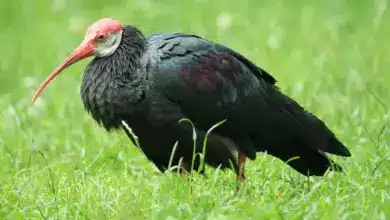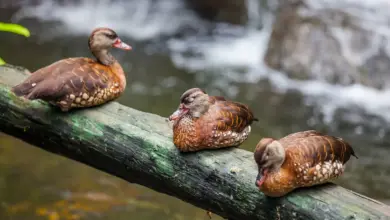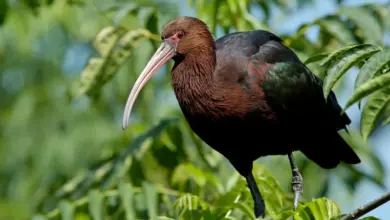Black-faced Ibises
The Black-faced Ibises (Theristicus melanopis) is a species of bird in the Threskiornithidae family. It is found in grassland and fields in southern and western South America.
It has been included as a subspecies of the similar Buff-necked Ibis, but today all major authorities accept the split.
On the contrary, the Black-faced Ibis includes the taxon branickii as a subspecies, although some authorities treat it as a separate species, the Andean Ibis (T. branickii).
Ibises resemble herons and share many of their habitats and behavioral traits, but unlike herons, ibises fly with necks outstretched and often in V-formation.

Description
It has a total length of approximately 75 centimetres (30 in).
In the nominate subspecies the head, neck, and lower chest are buffish, the crown and nape are cinnamon, the upperparts and (often incomplete) chest band are grey, the belly and flight feathers are black, and the wing coverts are whitish (though not contrasting strongly with the grey upperparts).
The bill, throat-wattle, and bare skin around the eyes are blackish and the legs are red. In the subspecies branickii the throat-wattle is smaller, the bill is shorter, the wing-coverts are greyer, the lower chest is paler and the cinnamon on the crown and nape is brighter and more extensive.
The similar Buff-necked Ibis is almost entirely restricted to warm regions, has contrasting large white wing patches, a dark grey (not buff) lower chest, and its throat-wattle is smaller than in T. m. melanopis.

Distribution and status
The nominate subspecies of the Black-faced Ibises is mainly found in southern South America, ranging throughout most of southern and central Argentina and Chile, where it occurs from sea level to an altitude of approximately 2,500 metres (8,200 ft). It also occurs very locally in coastal Peru. While it remains fairly common in Argentina and Chile, this subspecies has now been almost entirely extirpated from the Peruvian part of its range.
The subspecies branickii is restricted to altitudes of 3,000 to 5,000 metres (9,800 to 16,000 ft) in the Andean highlands of Bolivia, Peru, and Ecuador. It is generally uncommon, and formerly also occurred in Lauca in far northern Chile.
Overall the species is not threatened, and consequently treated as Least Concern by the IUCN.
Diet / Feeding
Ibises mostly feed in shallow waters on aquatic insects, mollusks, frogs, and food sifted from the water surface.
Their diet also includes insects caught on land, as well as lizards, worms, skinks, and other small reptiles.
Some species will also take small birds.
Breeding
Most breeding activities are observed after the rainy season when plenty of food is available.
They typically nest in colonies, often with other water birds.
The nests are shallow cup-shaped platforms of sticks, grasses, or reeds that are typically situated on trees near a body of water, such as rivers, swamps, or lakes. Although some ibises also make their nest amongst rocks and on cliffs,
The average clutch consists of 2 – 4 eggs. The nests are often reused year after year.






